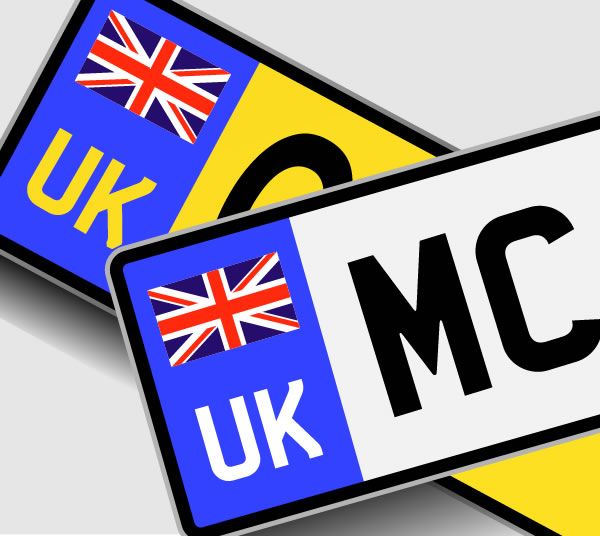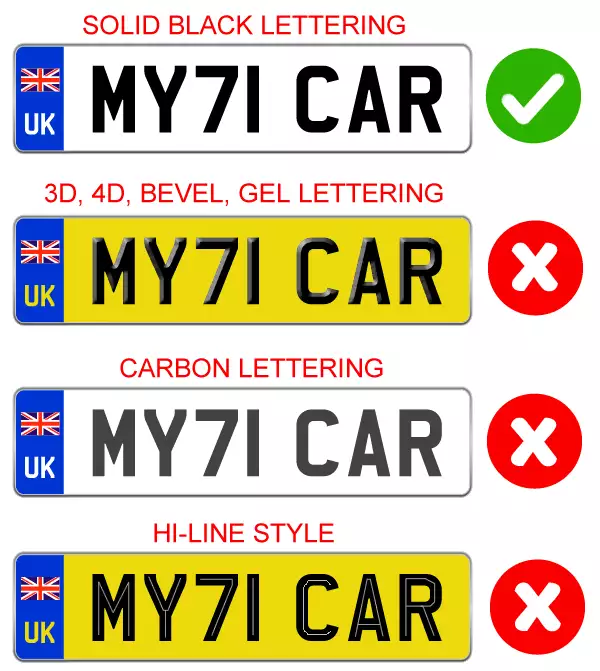New Requirements For 71 Reg Number Plates - BS AU 145e Standard
Published Date: 9th Sep 2021
As we see the new 71 plate car number plates rolled-out for September 2021, you should note a few changes to the spec that are a legal requirement for new vehicles.

The new standard is called BS AU 145e and it replaces the old BS AU 145d spec that has been in use for 20 years. The new plates are more durable and resistant to damage and many of the changes have been driven to make them more readable by ANPR cameras. It is estimated than around one million number plates are misread every day.
New Tougher & More Durable BS AU 145e Standard
The new plates are made from more durable materials and go through several tests to ensure they are resistant to weather, dirt, debris, stone chips and road salt for example.
The tests ensure they are resistant to corrosion and damage from debris ‘thrown up’ from the roads, the new and improved standard is one of the most stringent in Europe.
Additional tests include a ‘resistance to bending’ examination, to ensure plates retain their shape, a very specific test can be carried out to check a plate meets this standard. The plate is clamped and a 3KG weight is attached, and if the plate retains more than 2.5cm of the bend it does not meet the standard.
Plates must also be able to resist changes in temperature and retain the shape and size under changing conditions.
New Plates Must Meet A Near Infrared (NIR) Contrast Threshold
Near Infrared or NIR for short is the technology used by be traffic cameras equipped with ANPR (Automatic Number Plate Recognition). The technology uses a contrast threshold to distinguish letters on the plate from the yellow or white background.

The new standard ensures cameras can the read the number plate accurately. ANPR cameras are used for a wide range of purposes, for example average speed cameras, to identify stolen vehicles and in car parks up and down the country.
The style and colour of the letters/numbers plays a key part in making the plates NIR friendly, which we discuss next ….
Number Plates Must Only Use Solid Black Numbers & Letters
Number plates must only use solid black letters and numbers, 3D, 4D, Gel, Hi-Line and two-tone lettering are not permitted, the spacing between the lettering must comply to the standard of at least 7mm. The official 'Charles Wright' font must be used also.
A printed border is still permitted on the plate up to a maximum of 5mm thick, but there must be a gap of 10mm between the border and lettering. All these factors ensure ANPR cameras can read the plate number accurately.
Changes To Country Identifiers & Driving Abroad
The plate can have one of the following identifiers, with an accompanying flag; GB, UK, CYM, ENG, SCO, WALES.
Please note that if you plan to drive in an EU country post BREXIT, the rules have changed again and you will need to display a UK sticker (was formerly a GB sticker). If you have new number plate with a UK identifier, you will not need an additional sticker.
Green Plates
Green plates have been around since 2020 and you will see more of them. A green plate is used for a full EV car. *Note: hybrids and plug-in hybrids do not qualify for a green plate, the vehicle must be full electric. The purposes of green plates is for easy and automatic identification of a full electric vehicles. The concept is that councils can offer concessions to those driving full electric cars, for example free or cheaper parking in council car parks.
